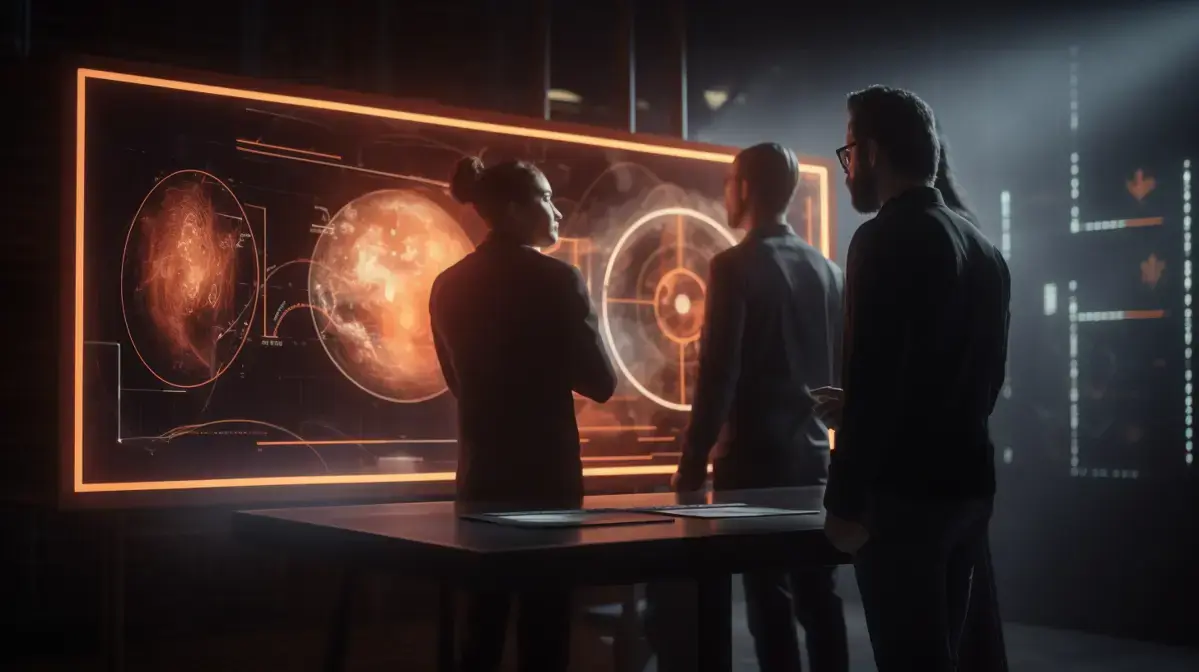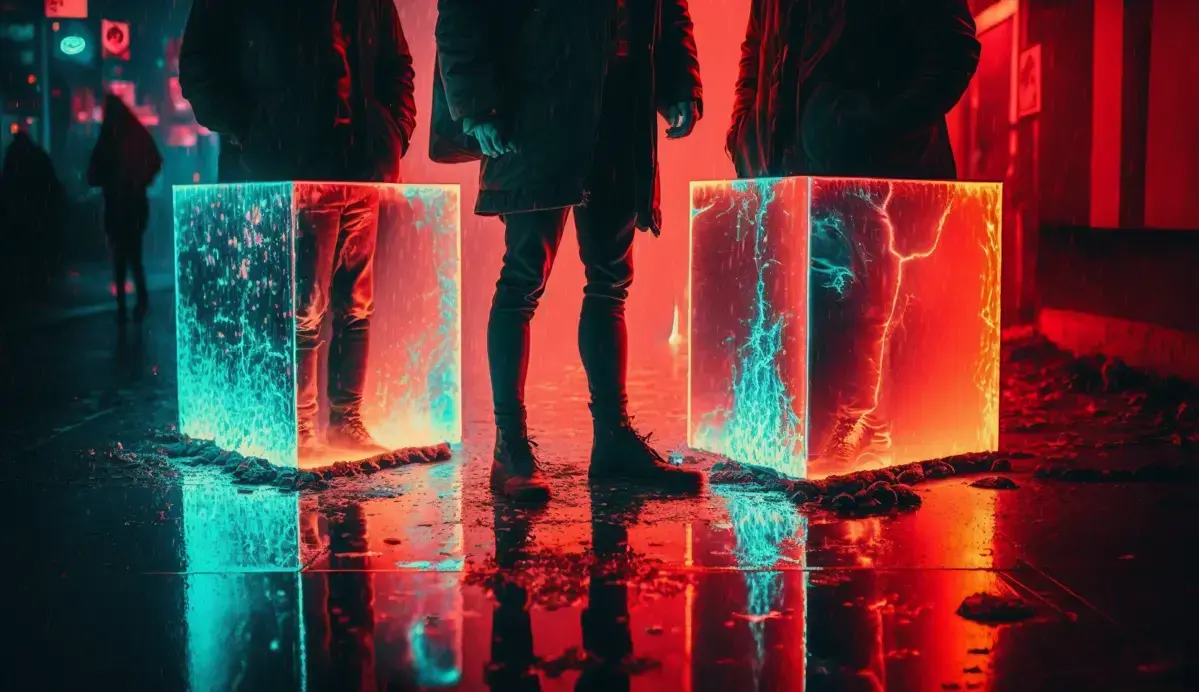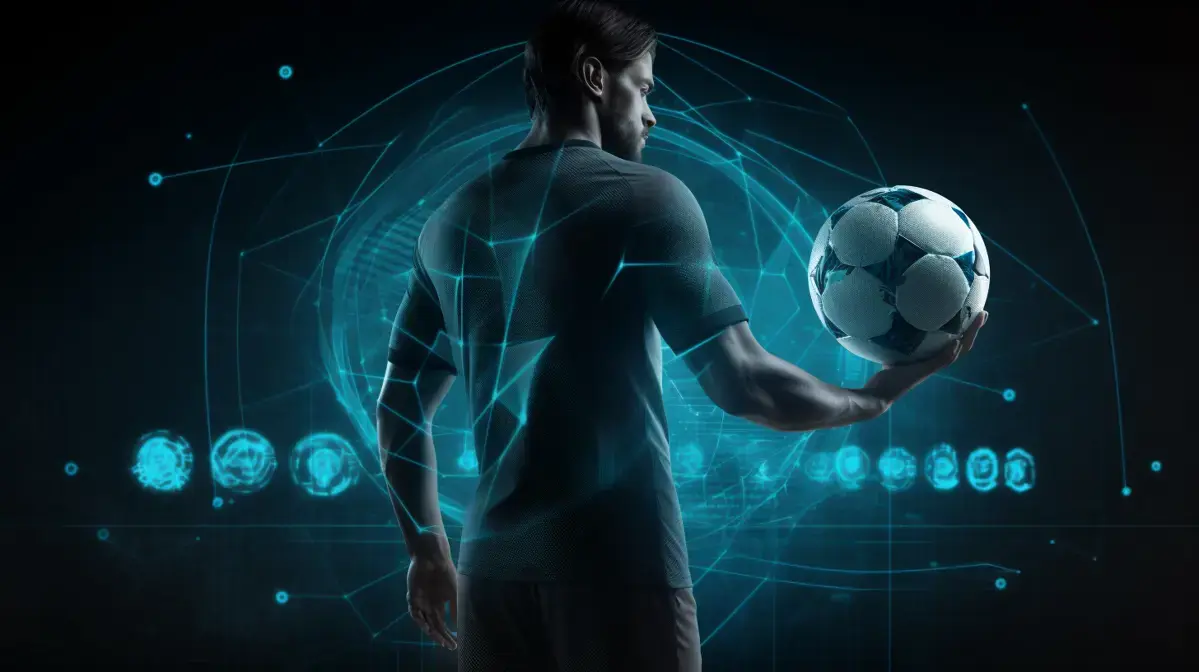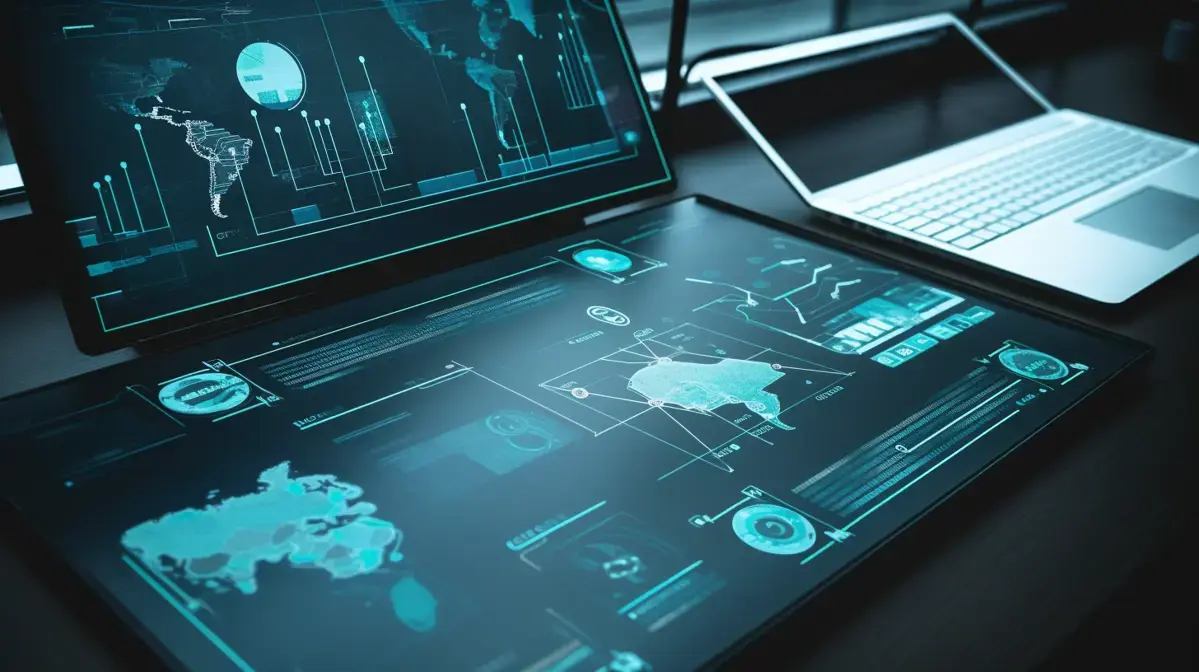As the travel and tourism industry continues to evolve, augmented reality is emerging as a transformative technology that promises to revolutionize the way we experience travel. With its ability to overlay digital information onto real-world environments, augmented reality allows tourists and travelers alike to explore new destinations in unprecedented ways.
One of the most compelling features of augmented reality in travel is its ability to provide immersive experiences that bring history, culture, and geography alive. With AR-enabled devices like smartphones or headsets, travelers can explore ancient ruins by virtually reconstructing them or view museum exhibits with added layers of contextual information.
Another significant advantage of using AR technology for tourism is its potential for seamless communication among international travelers who speak different languages. By leveraging voice recognition software alongside machine translation algorithms; Augmented Reality has enabled instant translations on restaurant menus or street signs across global destinations.
Augmented Reality’s core value proposition lies in enabling an interactive interface between data/technology and our physical world. This allows users to access and interact with enriched content/data overlaid on top of the real environment, thereby helping travelers make informed decisions about their destination choices and enhancing their overall tourist experience significantly.
Table Of Contents
- Key Points
- Introduction to Augmented Reality in Travel and Tourism
- How Augmented Reality is Enhancing Tourist Experience
- The Benefits of Integrating Augmented Reality in the Travel Industry
- Interesting Facts
- Examples of Successful Implementation of Augmented Reality in Tourism
- Future Possibilities: How Augmented Reality will Revolutionize the Way we Travel
- Challenges to Implementing Augmented Reality Technology in the Travel Sector
- FAQs
- Key Takeaways

Key Points
- Augmented reality is transforming the travel and tourism industry by enhancing the customer experience.
- Augmented reality allows tourists to explore destinations in a more immersive way, providing them with an interactive experience of their surroundings.
- The use of augmented reality technology has allowed for the creation of virtual tours, which offer visitors a glimpse into destinations before they even arrive, making vacation planning easier and more engaging
- This technology also allows for easier navigation around unfamiliar places through digital maps that can be overlaid onto real-world locations.
Augmented Reality in Travel and Tourism
Augmented reality (AR) is a game-changing technology that has revolutionized the world of travel and tourism. AR enhances experiences by overlaying digital information onto real-world objects, adding an extra layer of interactivity to any activity or attraction.
Imagine being able to explore a new city while wearing AR glasses, instantly receiving insider tips on where the locals go for food and entertainment as you walk down the street. Or visiting historical landmarks and having interactive digital guides that transport you back in time, allowing you to witness events as they happened.
One example of how AR is transforming travel is through virtual tours. With AR technology, visitors can tour attractions from anywhere in the world without ever leaving their home. For instance, popular museums like The Louvre are now offering virtual tours using 360-degree cameras coupled with augmented reality headsets – making it possible for people who might never have had access before due to physical limitations or financial constraints.
The impact goes beyond just making attractions more accessible; it’s also helping travelers bypass language barriers when exploring foreign countries. Imagine translating complex signs into your native language via a simple scan with your phone – this feature alone makes traveling easier than ever.
AR isn’t limited solely leisurely activities either; businesses are starting implementing this tech too. Hotels often use them when selling rooms – allowing potential guests alike were walking through them physically beforehand. Also within tourist hot spots retailers are embracing their uses further- imagine browsing souvenir shops from across borders during lockdowns? These examples demonstrate how even small interactions with augmentations may benefit both traveler experience but also contribute towards easing business challenges too.
All in all: Augmented Reality provides an immersive learning opportunity which offers tourists lively perspectives on destinations worldwide but equally contributes greatly towards solving logistical problems faced by businesses themselves aiming for customer satisfaction above all else
How Augmented Reality is Enhancing Tourist Experience
Augmented reality (AR) in travel and tourism industry has been the buzzword for a while now, but what exactly is it? AR is when digital elements are layered over real-world experiences. Think of it as an interactive layer on top of the physical world that brings your destination to life like never before.
Imagine being able to explore ancient ruins with 3D models overlaying them or using your phone camera to identify landmarks and points of interest around you. AR can give travelers access to information about their surroundings in real-time, creating immersive experiences that engage all senses.
One particularly exciting use case for AR technology is language translation. No more awkward pantomime or confusion – simply point your phone at signs and menus, and they’ll be instantly translated into whatever language you need. This feature alone makes traveling so much simpler than ever before.
The possibilities for Augmented Reality within Travel & Tourism are endless; from exploring new destinations through virtual tours from home even after returning home from a trip such as visiting Paris museums virtually long after leaving France – Imagine standing atop Mont-Saint-Michel without ever having left home. Now imagine taking this augmented experience into actual physical travel where sights come alive right under our eyes.
The Benefits of Integrating Augmented Reality in the Travel Industry
Augmented Reality (AR) is revolutionizing the travel and tourism industry. Imagine exploring a new city with a digital overlay of information appearing on your smartphone screen as you walk around. AR brings new dimensions to sightseeing, making it an interactive experience that engages all your senses.
Interesting Facts
-
- The global augmented reality (AR) market is projected to reach $61.39 billion by 2023.
- In the tourism industry, AR is being used for virtual tours of hotels, resorts and attractions.
- The use of AR in tourism allows visitors to see a destination before traveling there, allowing them to plan their trip better.
-
- Cultural sites are using AR technology for interactive exhibits that allow visitors to learn about history and artifacts in engaging ways.
-
- Airlines such as Emirates have started using AR glasses for cabin crew training programs which simulates real-life scenarios making training cost-effective while improving safety on board flights.
- In theme parks across the world like Disney World and Universal Studios, Virtual Reality (VR) roller coasters provide an experience where riders wear VR headsets as they ride giving them a more immersive experience than ever before.

Examples of Successful Implementation of Augmented Reality in Tourism
Augmented Reality (AR) technology has been around for a while, but it is now revolutionizing the travel and tourism industry. Imagine walking through a foreign city with your smartphone camera pointed at different landmarks or street signs, only to have useful information about each location pop up on your screen in real-time. That’s exactly what AR can do for travelers today.
Imagine being able to walk through ancient ruins such as those found in Rome or Pompeii while holding up your phone and seeing 3D reconstructions overlaid onto the real-world view – giving you an interactive experience of what these structures looked like hundreds if not thousands of years ago. This type of virtual time-travel is becoming more widely available thanks to advances in Augmented Reality tech combined with high-quality data sources.
Overall, there are many exciting applications for Augmented Reality in both the tourism and travel industries. This includes showcasing destination attractions and historical sites virtually before visiting them physically, as well as adding interactivity through gesture-based interfaces. These interfaces allow users to participate throughout their journeys, particularly during guided tours, generating stronger engagement and brand loyalty towards hotels, restaurants, and destinations that incorporate this innovative technology.
Future Possibilities: How Augmented Reality will Revolutionize the Way we Travel
Augmented Reality (AR) is revolutionizing the travel and tourism industry, allowing travelers to experience their destinations in a whole new way. AR overlays digital information onto the real world, creating an immersive and interactive experience for users. From virtual tours of historical sites to language translation tools, this technology has endless possibilities for enhancing a traveler’s journey.
It’s been exciting to witness how AR is transforming the way we explore our world. One example that comes to mind was when I used AR while visiting Rome last year. Through my phone screen, I could see detailed 3D models overlaying ancient ruins bringing them back to life before my eyes. It made me feel like I was time-traveling.
But it’s not just historical sites where AR shines; museums around Europe are also adopting this technology as they seek new ways of engaging visitors’ attention through interactive exhibits that come alive with animations or voice-guided experiences explaining each piece on display.
If you’re someone who loves traveling but wants more than just looking at photos or watching videos online, Augmented Reality (AR) may be exactly what you need. AR has the ability to enhance your surroundings by adding informative layers over everything, from menus at restaurants all across Japan (using machine learning software). There really isn’t any limit on what can be done, thanks largely to advancements being made constantly within AI development. These advancements are specifically aimed towards improving technologies like AR, which have led us in innovative directions within industries like tourism. We are already seeing mass implementations of AR worldwide today, including many resorts domestically as well.
Overall though one thing remains clear; if you want something truly unique during your travels while still experiencing something authentic- then embracing augmented reality might very well provide those things without ever having even left home yet.
Challenges to Implementing Augmented Reality Technology in the Travel Sector
Augmented Reality (AR) has taken the world by storm, and its potential in the travel and tourism industry is limitless. AR technology allows users to experience a blend of virtual reality with their surrounding environment, creating an immersive sensory experience. Imagine being able to virtually explore different destinations before booking your trip or walking through historical sites with a digital guide providing interactive insights – all thanks to AR.
As someone who was born in England and has had extensive travels around Europe, they can attest that adding an augmented layer on top of real-world experiences brings a whole new level of excitement. For example, imagine visiting Paris for the first time without any prior language skills; now picture pointing your smartphone at street signs or menus while having them instantly translated via AR technology – this could alleviate many frustrations commonly experienced while travelling.
Augmented Reality’s applications go beyond just translation services. Museums are implementing it as an educational tool, allowing visitors to access additional information about artworks much more easily than traditional methods allowed. Businesses within the travel and tourism industries, from airlines and tour operators to tourist attractions themselves, need only embrace what is already taking over other customer-facing service sectors such as retail. These sectors have been entirely transformed by leveraging Augmented Reality technology into their customer journeys.
With so many possibilities available today using augmented reality technologies related to Tourism there’s no doubt we’ll continue seeing more innovative applications emerge in years ahead; Henceforth traveling will never be same again.
FAQs
1. What is augmented reality?
Augmented reality (AR) is a technology that blends digital information with the physical world in real-time, allowing users to interact with computer-generated objects and data as if they were part of their environment.2. How does AR impact the travel and tourism industry?
AR has great potential to transform travel experiences by providing interactive and engaging ways for travelers to explore new places, learn about local culture, history or attractions in more immersive fashion.3. What are some examples of AR being used in tourism today?
Some examples include using mobile apps that overlay historical information on top of real-world landmarks; virtual tours where visitors can experience destinations before they arrive; or wearable devices like smart glasses that provide personalized audio guides for museum exhibits.4. What challenges need to be overcome before AR becomes widely adopted in tourism industry?
There are many challenges such as lack of standardization around hardware/software platforms, high development costs which may limit accessibilityfor smaller businesses; user acceptance issues due unfamiliarity with technology among older generations etc. However these must be addressed so we can unlock huge benefits from this exciting field.
Conclusion:
Augmented reality has the potential to revolutionize the travel and tourism industry, transforming how people plan and experience their trips. From enhancing virtual tours of destinations, providing personalized recommendations based on user preferences, streamlining hotel check-ins with AR-powered kiosks to creating immersive experiences through gamification- there are endless possibilities for AR in travel.
As technology continues to evolve rapidly and travelers seek more unique experiences during their trips, businesses in the tourism industry need to embrace augmented reality as a tool that can help them stand out from competitors. Whether it’s tour operators or hotel chains- those who integrate innovative technologies like AR into their offerings will be at an advantage.
The future of travel is exciting as we see new ways emerging where technology intersects with human connection. Augmented Reality could potentially take us places we never thought possible – allowing us access not just traditional tourist sites but also giving insights into local cultures or histories that were previously inaccessible without significant barriers such language differences or physical limitations like mobility issues.
It’s clear that augmented reality is set to transform how consumers interact with brands within this sector – unlocking its potential may depend on forward-thinking leaders taking full advantage of what these technologies have got offer while remaining aware of evolving customer needs over time if they hope stay ahead.
Key Takeaways
- Augmented reality is transforming the travel and tourism industry, offering new ways for users to experience destinations.
- The technology enhances user engagement by providing interactive experiences that make travel more enjoyable and memorable.
- Augmented reality can be used in a variety of settings, from hotels and airports to museums and attractions.
- This technology has great potential for helping travelers navigate unfamiliar locations with ease through features such as GPS-enabled maps.
-





































